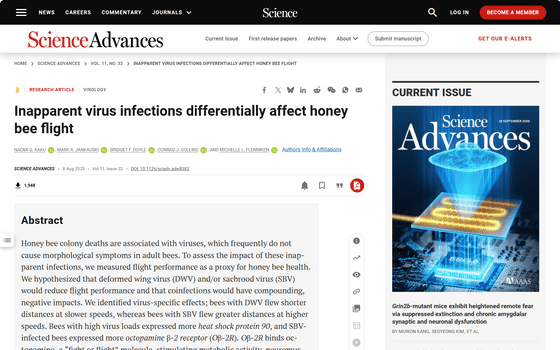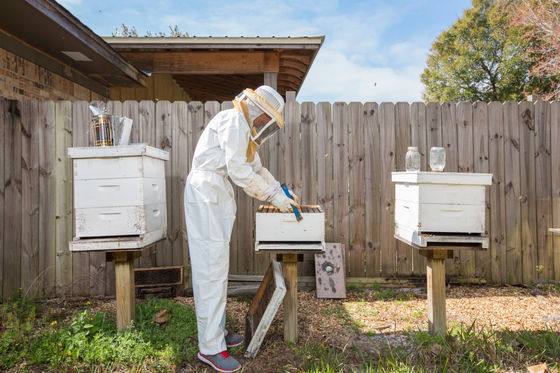What virus makes honeybees fly longer?

Honeybee colonies are often devastated by viruses, but a study investigating these viruses has revealed that there is a virus that causes honeybees to fly longer distances.
Inapparent virus infections differentially affect honey bee flight | Science Advances

Hidden honey bee viruses alter flight distance and speed in different ways
Most of the viruses that infect honeybees belong to the family called Picornaviridae, including viruses that we often hear about in the news every day, such as foot-and-mouth disease virus and hepatitis A virus.
Honeybees are particularly susceptible to diseases such as Deformed Wing Virus (DWV), which causes deformed wings, and Sacbrood Virus (SBV), which infects larvae and causes fluid to form between the body and the cuticle. These viruses often lead to the destruction of colonies.

These viruses can spread without causing any visible changes in the host, and by the time they are noticed, it may be too late. Therefore, Naomi G. Kaku and her colleagues at Montana State University hypothesized that 'honeybees with high virus loads may be physiologically adversely affected even if they appear asymptomatic, and that the flight distance of individual bees may be an indicator of their health.'
Kaku and his colleagues collected honeybees infected with DWV and SBV, as well as bees intentionally infected with the virus, and measured whether the flight distances of the infected bees differed. As a result, it was found that honeybees infected with DWV flew shorter distances than uninfected bees, while honeybees infected with SBV flew longer distances at higher speeds.
Based on the data obtained from the experiment, the researchers predicted that bees with high levels of DWV would fly 49% shorter on average, while bees with high levels of SBV would fly 53% longer. They also found that bees infected with both DWV and SBV flew shorter distances than uninfected bees, but still flew longer distances than bees infected with only DWV.

'Flight is the most metabolically costly behavior for honeybees, so DWV infection can increase the energy burden and reduce foraging ability. This can lead to a decrease in food availability in colonies of a certain size, which could lead to colony collapse due to nutritional stress. Meanwhile, SBV-infected honeybees may expand their range of activity, potentially spreading the infection further.'
'This suggests that viruses that affect the behavior and health of individuals can have impacts not only at the colony level but also at the ecosystem level,' Kaku and his colleagues said.
Related Posts:







